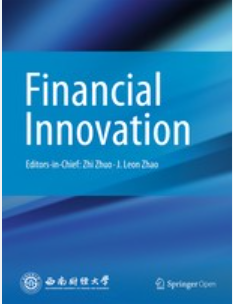美国各州对 COVID-19 的反应是否恢复了投资者情绪?来自标准普尔 500 指数金融机构的证据
IF 7.2
1区 经济学
Q1 BUSINESS, FINANCE
引用次数: 0
摘要
本文专门研究了美国政府的紧急行动对投资者情绪-金融机构股票回报关系的影响。尽管有许多研究进行了尝试,但文献仍未就这一关系给出答案。我们使用新的特定公司 Twitter 投资者情绪(TS)指标,并对标普 500 指数中 66 家金融机构从 2020 年 1 月 1 日至 12 月 31 日的每日数据进行面板平滑过渡回归,发现根据大流行病形势和美国各州对 COVID-19 的反应,TS 的作用是非对称、非线性和随时间变化的。换句话说,我们揭示了 TS 与金融机构股票回报之间的关系,并确定它随着美国各州对 COVID-19 的反应而变化。在政府反应宽松的情况下(第一种机制),TS 对金融机构股票回报率没有影响;然而,当政府反应趋于严格(政府总体反应指数超过 63.59 临界值)时,这一积极影响在第二种机制中变得显著。此外,结果显示,过渡函数的斜率很高,表明第一和第二制度之间的过渡是突然的,而不是平稳的。结果是稳健的,对政策制定者、投资分析师和投资组合经理具有重要的政策意义。本文章由计算机程序翻译,如有差异,请以英文原文为准。
Do US states’ responses to COVID-19 restore investor sentiment? Evidence from S&P 500 financial institutions
This paper specifically investigates the effects of US government emergency actions on the investor sentiment–financial institution stock returns relationship. Despite attempts by many studies, the literature still provides no answers concerning this nexus. Using a new firm-specific Twitter investor sentiment (TS) metric and performing a panel smooth transition regression for daily data on 66 S&P 500 financial institutions from January 1 to December 31, 2020, we find that TS acts asymmetrically, nonlinearly, and time varyingly according to the pandemic situation and US states’ responses to COVID-19. In other words, we uncover the nexus between TS and financial institution stock returns and determine that it changes with US states’ reactions to COVID-19. With a permissive government response (the first regime), TS does not impact financial institution stock returns; however, when moving to a strict government response (the overall government response index exceeds the 63.59 threshold), this positive effect becomes significant in the second regime. Moreover, the results show that the slope of the transition function is high, indicating an abrupt rather than a smooth transition between the first and second regimes. The results are robust and have important policy implications for policymakers, investment analysts, and portfolio managers.
求助全文
通过发布文献求助,成功后即可免费获取论文全文。
去求助
来源期刊

Financial Innovation
Economics, Econometrics and Finance-Finance
CiteScore
11.40
自引率
11.90%
发文量
95
审稿时长
5 weeks
期刊介绍:
Financial Innovation (FIN), a Springer OA journal sponsored by Southwestern University of Finance and Economics, serves as a global academic platform for sharing research findings in all aspects of financial innovation during the electronic business era. It facilitates interactions among researchers, policymakers, and practitioners, focusing on new financial instruments, technologies, markets, and institutions. Emphasizing emerging financial products enabled by disruptive technologies, FIN publishes high-quality academic and practical papers. The journal is peer-reviewed, indexed in SSCI, Scopus, Google Scholar, CNKI, CQVIP, and more.
 求助内容:
求助内容: 应助结果提醒方式:
应助结果提醒方式:


